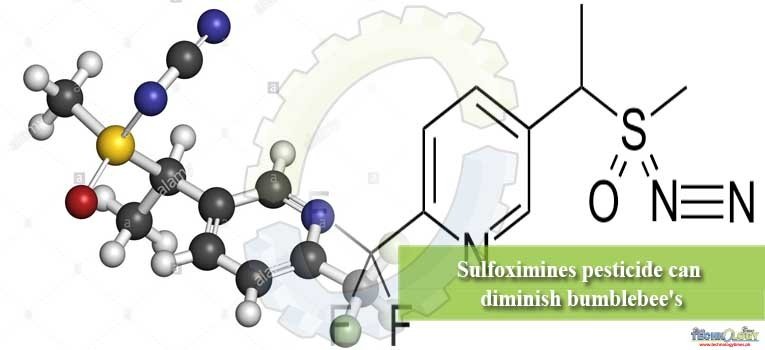Sulfoximines, a class of pesticides now being adopted worldwide as a replacement for compounds known to harm pollinators, themselves diminish queen bumblebee’s reproductive capacity, a new study finds.
 In a report published today (August 15) in Nature, researchers report that colonies founded by queens exposed to small amounts of sulfoxaflor, an insecticide that kills aphids, psyllids, and other pests, produce 54 percent fewer male drones than do unexposed colonies and no new queen bees at all.
In a report published today (August 15) in Nature, researchers report that colonies founded by queens exposed to small amounts of sulfoxaflor, an insecticide that kills aphids, psyllids, and other pests, produce 54 percent fewer male drones than do unexposed colonies and no new queen bees at all.
Our study highlights that stressors that do not directly kill bees can still have damaging effects further down the line, because the health of the colony depends on the health of its workforce coauthor Elli Leadbeater of Royal Holloway University of London tells The Irish News.
Leadbeater and her coauthors captured wild queen bumblebees (Bombus terrestris) and fed them and their new colonies either a control sugar solution or one spiked with five parts per billion of sulfoxaflora level they based on estimates of what the insects would be exposed to in sprayed fields.
After two weeks, they placed the colonies in a field, but continued monitoring them. A few weeks later, there were detectable differences in the numbers of worker bees in the exposed and unexposed colonies. And while 3 of the 26 control colonies produced new queen bees during the experiment, none of the exposed colonies yielded new queens.
Unlike neonicotinoids, pesticides that have been found to impair pollen foraging, sulfoxaflor did not appear to impede bumblebees’ ability to get food, Nigel Raine of the University of Guelph writes in an accompanying commentary.
“Perhaps early-stage colony growth and subsequent reproductive output were affected by sulfoxaflor toxicity to developing larvae, or by some other indirect mechanism either way, the timing of declines in colony growth rate suggests that chronic sub lethal stress at an early stage resulted in substantially reduced colony reproduction.